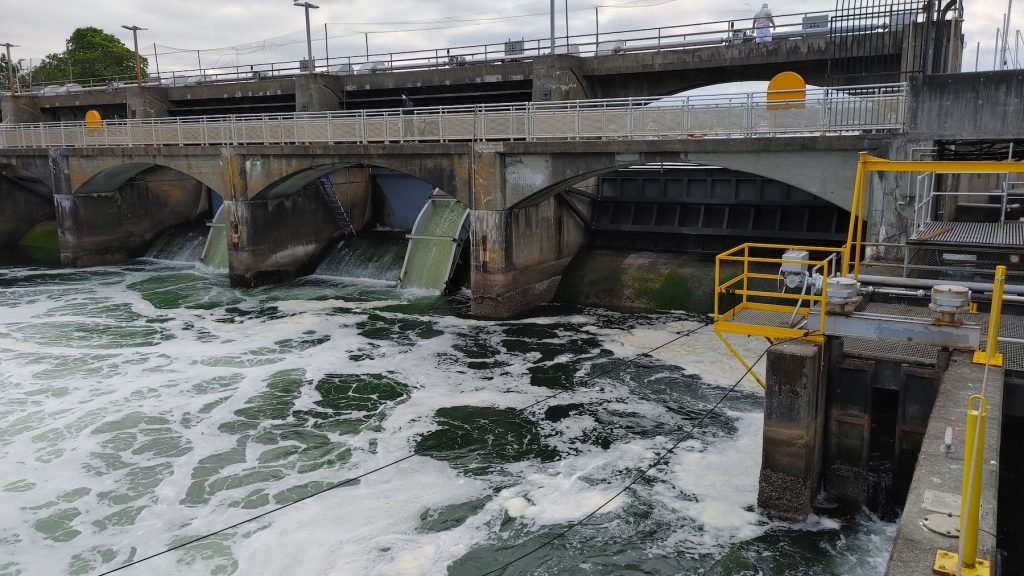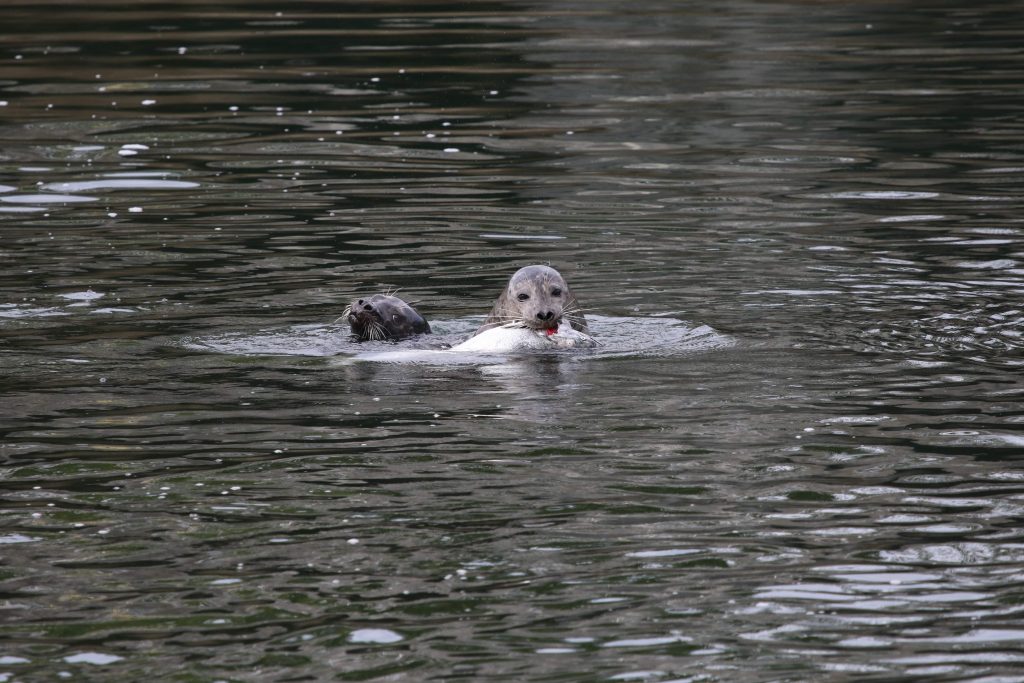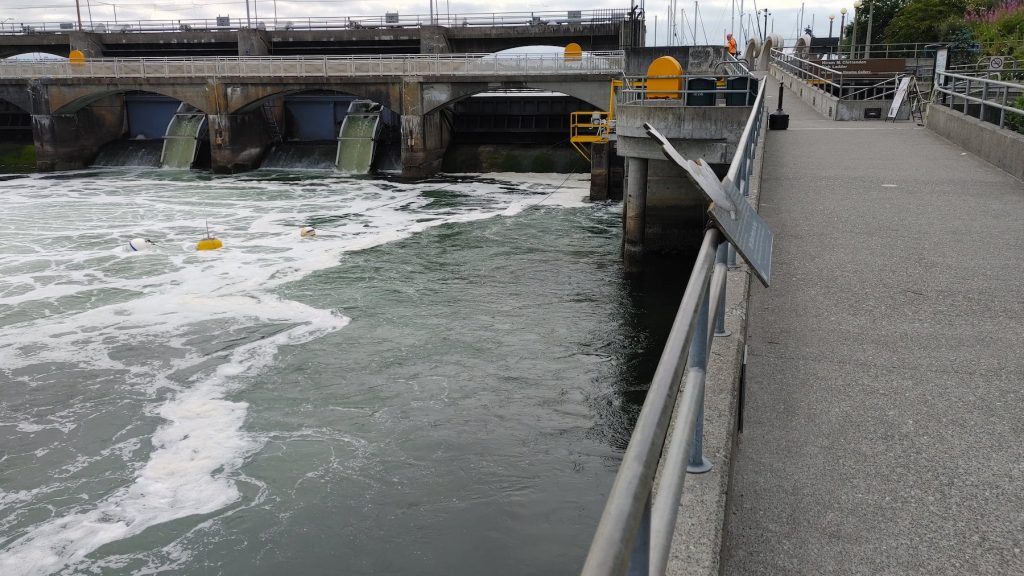Lake WA Sockeye To Be Taken From Locks To Hatchery To See If More Survive To Spawn
Lower Granite Dam on the Snake River isn’t the only place in Washington where salmon managers will capture and truck heat-sensitive sockeye around too-warm waters this summer.
State, tribal and utility biologists plan to catch several hundred sockeye at Seattle’s Ballard Locks and transport them directly to a hatchery on a Lake Washington tributary, bypassing the deadly ship canal in a test to see if more survive to spawn in fall.

“In recent years the adults that we catch in the lower Cedar River at the trap have sometimes been in bad shape when we get them, and we’ve had high rates of prespawn mortality in the adults in the hatchery ponds. We’re going to see if we can get better survival rates by catching them at the locks and holding them in the hatchery ponds, rather than letting them hang out in Lake Washington for the summer,” says WDFW biologist Aaron Bosworth.
The installation of special new 20-foot-diameter, cold-spring-fed ponds at Seattle Public Utilities’ Landsburg Hatchery on the Cedar is expected to ready for the salmon by early next week, so Bosworth says biologists will start capturing fish Wednesday.
“With the low run this year, it could take a week or more of netting at the locks to catch the 300-fish goal,” Bosworth said.
The joint effort by WDFW, the Muckleshoot Tribe and SPU was described as a “last-ditch effort to save and restore the Cedar River sockeye run to harvestable numbers” in a late June letter to Governor Jay Inslee by the Cedar River Council.
With the peak of this year’s run likely in the rearview mirror, 21,188 sockeye had been counted at the locks through Tuesday, woefully short of the amount needed for recreational and commercial tribal fisheries to occur – 350,000. The last sport season was way back in 2006.
The council – comprised of watershed residents, local and regional government representatives and other interests including sport anglers – also asked Inslee to reconfirm his support for restoring the run and to possibly “(encourage) key parties to pursue specific projects and supporting State funding of some of the recovery actions.”
The letter followed on a February opinion piece in The Seattle Times by Jeremy James, Muckleshoot Tribal Council member and Fish Commission chair, and WDFW Director Kelly Susewind, calling for the region to save Lake Washington’s “treasured” sockeye.

The problem that sockeye biologists are trying to get around with this experiment is the Lake Washington Ship Canal’s twin scourges of too-warm waters in the relatively shallow channel between Puget Sound and the main lake during the sockeye migration, and the low dissolved oxygen levels the fish encounter while transiting it.
“Water quality conditions in the Lake Washington Ship Canal during key migration periods can block or delay passage, lead to increased susceptibility to predators, parasites and infectious diseases, affect reproduction, and sometimes directly result in fish kills,” states a King County Department of Natural Resources synthesis-of-science paper published in March.
Prespawn mortality has risen sharply in recent years, with 77 percent of 2018’s entire run of 32,103 sockeye going missing between the Ballard Locks and the Cedar River.
In 2016, 80 percent disappeared. In 2004, half the run reportedly did – some 200,000 fish.
The progeny of those sockeye that do manage to survive to spawn in the wild or at the hatchery face an increasing predator suite of cutthroat, northern pikeminnow, yellow perch, rock bass and other species as they rear for a year in Lake Washington and then attempt to swim out through the ship canal.
Then there are the harbor seals that lurk below the locks as adult sockeye return from June into August.
An acoustic device designed to scare the pinnipeds away from the chokepoint showed some initial positive results last summer, and observers at the locks earlier this month saw no seals immediately around it, but they also reported from a half dozen to nine in the vicinity.

Capturing and transporting the sockeye from the locks to the hatchery is just the start.
“Then we have to keep them alive until the spawning period, which is typically in mid-October, so about three months,” said Bosworth.
It’s an interesting experiment and if it proves successful, salmon lovers, managers, policy makers and others will have some things to mull.
